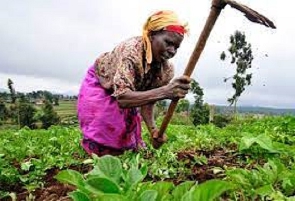The agricultural sector is the backbone of many economies across the world. It is responsible for producing food and other crops that sustain human life and support various industries. However, the sector has faced many challenges such as climate change, population growth, and limited resources, which have threatened food security in many parts of the world.
Information technology has the potential to transform the agricultural sector, making it more productive, efficient, and sustainable. Through the use of technology, farmers can access critical information on weather patterns, crop management, and market trends, which can help them make informed decisions and improve their yields.
One of the most significant benefits of information technology in agriculture is its ability to improve the accuracy and timeliness of data collection. With the help of sensors and other advanced technologies, farmers can collect real-time data on soil moisture, temperature, and other environmental factors that impact crop growth. This information can help them adjust their farming practices accordingly and optimize their yields.
Another way in which information technology is transforming agriculture is through precision farming. Precision farming involves using advanced technologies such as GPS, drones, and satellite imagery to map and monitor crop growth. Farmers can use this information to identify areas of their fields that need more water, fertilizer, or other inputs, and apply them only where needed. This not only reduces waste but also increases yields and reduces the environmental impact of farming.
Information technology is also improving access to markets for farmers, particularly smallholder farmers in developing countries. Mobile phones and other digital technologies are helping farmers connect with buyers, access market information, and negotiate better prices for their crops. This has the potential to improve the livelihoods of millions of smallholder farmers and contribute to the overall development of rural areas.
In addition to these benefits, information technology is also helping to improve the resilience of the agricultural sector to climate change. With the help of advanced weather forecasting and early warning systems, farmers can better prepare for extreme weather events such as droughts and floods. They can also adopt climate-smart farming practices such as conservation agriculture and agroforestry, which help to mitigate the impact of climate change on crop yields.
Despite the many benefits of information technology in agriculture, there are also challenges that need to be addressed. One of the biggest challenges is the lack of access to technology and digital infrastructure in many rural areas. Governments and other stakeholders need to invest in building the necessary infrastructure and providing training and support to farmers to help them adopt these technologies.
Another challenge is the cost of technology, which can be prohibitive for many farmers, particularly smallholder farmers in developing countries. Governments and other stakeholders need to develop innovative financing mechanisms that make these technologies more affordable and accessible to farmers.
In conclusion, information technology has the potential to transform the agricultural sector, making it more productive, efficient, and sustainable. Through the use of technology, farmers can access critical information on weather patterns, crop management, and market trends, which can help them make informed decisions and improve their yields. However, to realize the full potential of information technology in agriculture, governments, and other stakeholders need to invest in building the necessary infrastructure and providing training and support to farmers. They also need to develop innovative financing mechanisms that make these technologies more affordable and accessible to farmers. By doing so, we can ensure that the agricultural sector continues to sustain food security and support economic development for years to come.
Opinions of Friday, 24 February 2023
Columnist: KWADWO YE-LARGE(THE POLITICAL DOCTOR )



















